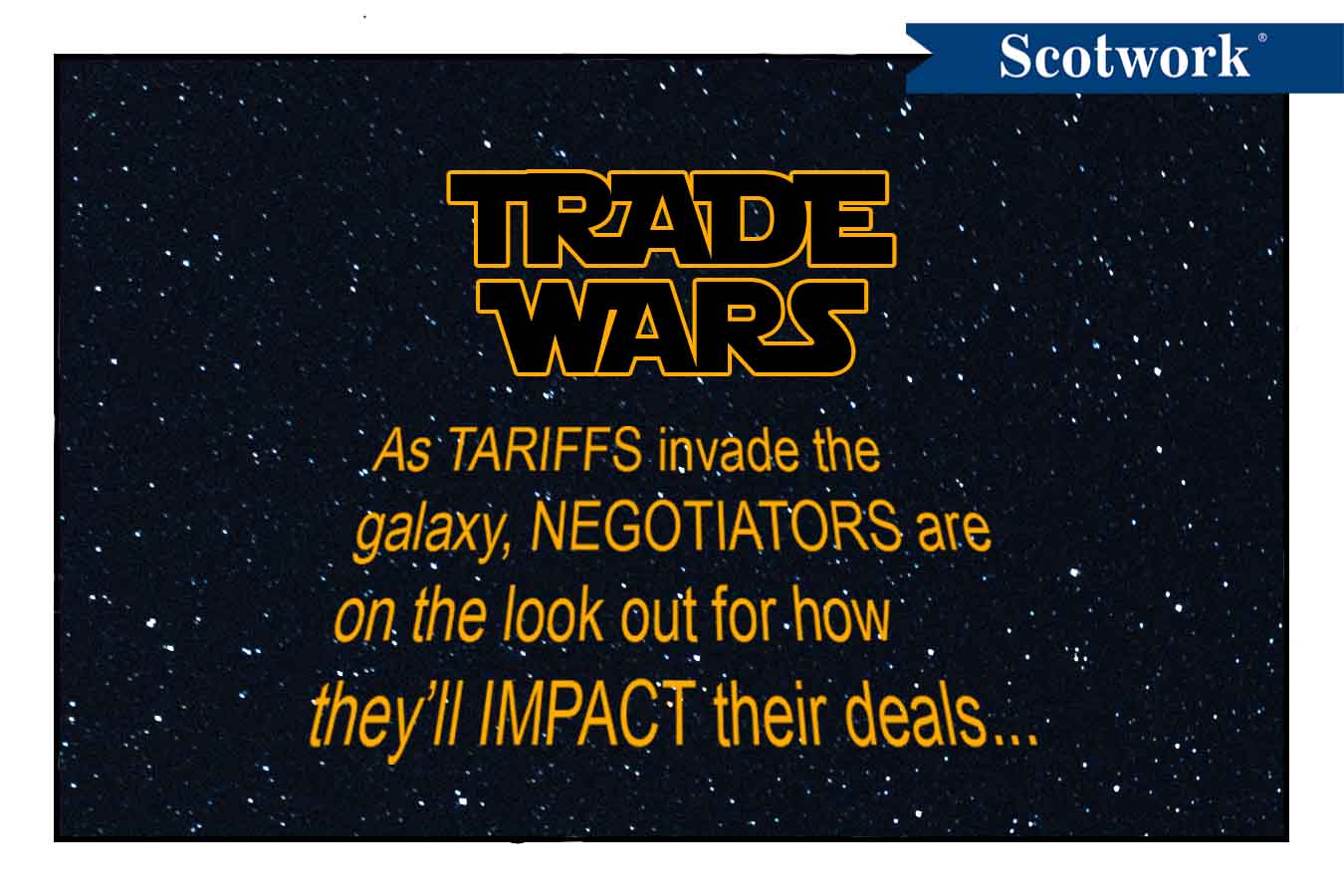The latest round of tariffs has set off a flurry of reactions across industries — some rational, others reactionary. Businesses are scrambling to adjust, passing costs down the supply chain, renegotiating agreements, and in some cases, making knee-jerk decisions that could cost them dearly when the dust settles. But if history has taught us anything, it’s that trade wars, like all economic disruptions, are temporary. The challenge for negotiators isn’t only reacting to what’s happening today; it’s anticipating what comes next and structuring deals accordingly.
We’ve been here before. Tariffs get imposed, trade partners retaliate, and businesses feel the squeeze. But then? Political winds shift, new agreements are forged, and the cycle resets. Yet many companies, in an attempt to manage the immediate pain, lock in long-term changes or restrictive terms that become ongoing burdens once conditions improve.
We saw this a lot during the rise of inflation. Many companies were forced to accept price increases. Because they didn’t view inflation as a temporary issue, but rather a permanent change, they had no way to restructure pricing when inflation decreased. Worse yet, we consulted with many companies being pushed to accept price increases, and as we dug in, we discovered that the other companies couldn’t justify the price increases. Those companies were simply being opportunistic because of the macrosituation. In times of change, it’s important to keep your wits about you and recognize the moment for what it is.
Negotiation is often about balance — addressing today’s needs without sacrificing tomorrow’s opportunities. That’s why smart negotiators build flexibility into their agreements instead of treating trade disruptions as permanent conditions.
Rather than making hard-and-fast changes that might later be regrettable, we teach negotiators to structure deals with built-in adaptability. Here’s how . . .
- Escalation clauses allow for price adjustments tied to specific triggers, such as tariff increases or decreases. This prevents either party from being locked into unfavorable terms when conditions shift.
- Indexed pricing ties costs to an external benchmark — like commodity prices or tariff levels — instead of setting a fixed price. Pricing naturally adjusts over time.
- Renegotiation triggers allow the parties to revisit their agreements when certain thresholds are met — such as a tariff rate exceeding (or dropping below) a defined percentage — rather than being stuck in an outdated agreement.
These approaches don’t just protect against uncertainty; they create a framework in which businesses can operate with confidence, knowing their agreements will evolve with the economic landscape.
That’s not to say businesses can ignore the present reality. Increased costs need to be managed, and profit margins will always matter. But the smartest negotiators don’t just place bets on what will happen next; they hedge their risks and maintain optionality in their agreements.
The key takeaway? Don’t let temporary disruptions dictate permanent agreements. Build flexibility into your deals, anticipate change, and negotiate with the long game in mind.
Are trade wars or tariffs impacting your deals? Attend our FREE upcoming webinar on Mar. 6, 2025: Mastering the Toughest Negotiations. Register now!
We Can Help You Negotiate for the Long Game.
Don’t let temporary disruptions dictate permanent agreements. Rely on Scotwork’s 50 years of experience to anticipate change and build flexibility. Talk to one of our experts today.

